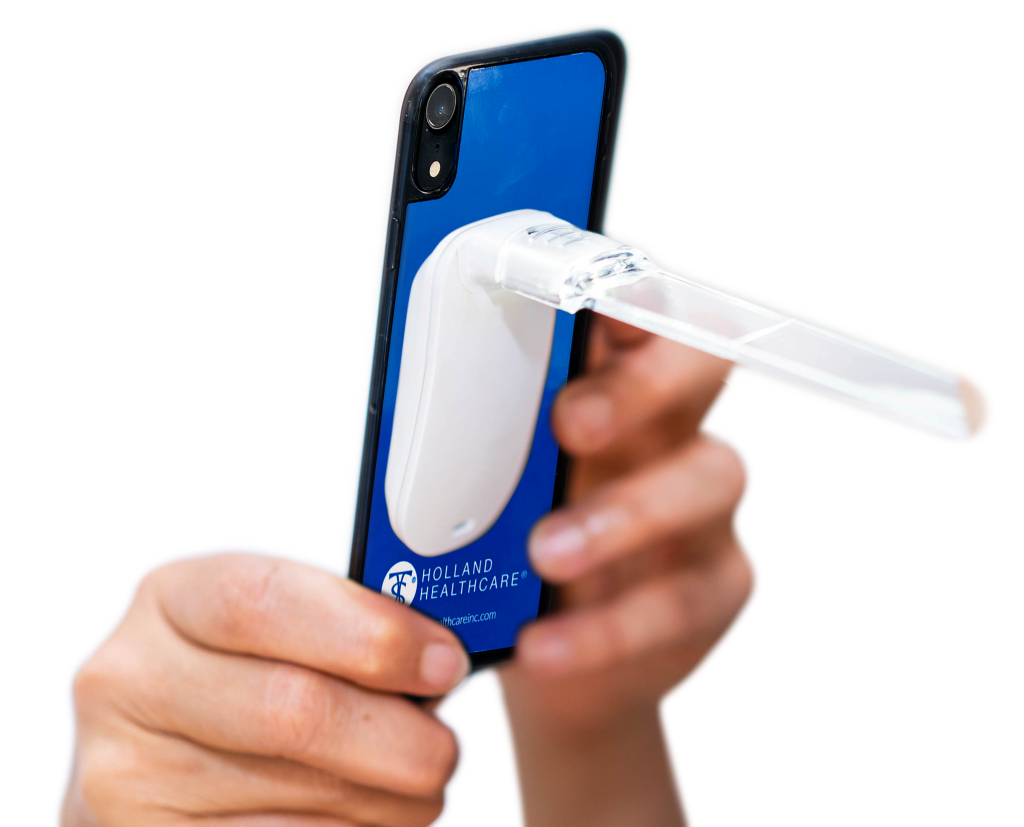
by Dr. Ben Hechler, MD, DDS
Head & Neck Surgeon, Oral & Maxillofacial Surgeon, Surgical Oncologist
Duke University Hospital
Dr. Ben Hechler, MD, DDS of Duke University Hospital provides various use cases for TelScope Telehealth System in the medical setting.
TelScope Telehealth System is a device and app combination which examines inside of the intraoral cavity. It then transforms any smart device into an intraoral camera and works together with the TelScope App to capture superior images and videos inside the mouth. Finally, the app allows the user to connect those images securely.
The TelScope can be used by medical professionals and patients alike. See use cases of professional-to-professional (provider-initiated) and use cases of patient-to-professional (patient-initiated).
PROVIDER-INITIATED TELEHEALTH IMAGES & VIDEO
Specialist: Oral Manifestations of Systemic Diseases
Dermatology, Endocrinology, Rheumatology, & Others
- Conditions such as lupus, rheumatoid arthritis, diabetes, lichen planus, inflammatory bowel disease, Addison disease, and many others have oral manifestations.
- Monitoring of these oral manifestations and documenting progression or improvement with the TelScope can help serve as an temporal and objective record of disease control
Critical Care Medicine (ICU Care)
- Patients in the ICU require multiple oral drains, tubes, or interventions (breathing tube, feeding tube, bronchoscope, etc.). The multiple tubes & the patient’s sedation status often make standardized ICU oral care (which is a national standard) difficult or impossible.
- The TelScope can be used to facilitate these required ICU oral examinations & ICU oral care.
Head and Neck Providers
Documentation / Monitoring of Lesions
- Patients identified in clinic to have an oral lesion of undetermined significance have standardized photographs taken with the TelScope at each recall visit.
Communication with Dentist or PCP
- The TelScope images and videos taken, as noted above, can easily be sent via the electronic medical record or encrypted email to referring and primary providers.
Communication with Pathologist
- Pathologists frequently request intraoral images of lesions submitted for pathology evaluation.
- The TelScope device facilitates this communication with standardized imaging and videos.
Anesthesia Providers
- During pre-anesthesia visits anesthesia providers and nurses document oral and oropharyngeal scores, such as the Mallampati score, to address pre-operative airway risk.
- Documenting this with the TelScope makes communication between the pre-anesthesia team and the day-of-surgery anesthesia team more clear and objective.
PATIENT-INITIATED TELEHEALTH IMAGES & VIDEO
Remote Cancer or Pre-Cancer Lesion Monitoring
- Patients identified in clinic to have an oral lesion of undetermined significance are given the TelScope Telehealth System.
- The patients send monthly photos using the TelScope via the electronic medical record.
- When the physician or patient notice a change, the patient is brought in or referred for further evaluation and biopsy
Remote Post-Operative Monitoring
- Patients having had an oral or throat procedure are provided the TelScope Telehealth System.
- Photographs and videos can be taken on routine intervals or based on patient concern and sent via the electronic medical record.
Remote Infection or Recurrent Oral Condition Monitoring
- Patients with a recent, frequent, or recurrent oral condition (e.g. canker sores, strep throat,
tonsillitis, “lie bumps,” oral thrush) are provided the TelScope Telehealth System. - Photographs and videos can be taken when the patient perceives an oral change or as instructed by their provider to monitor resoltion of lesions or infections.
Download the PDF on TelScope Telehealth System medical use cases here.


